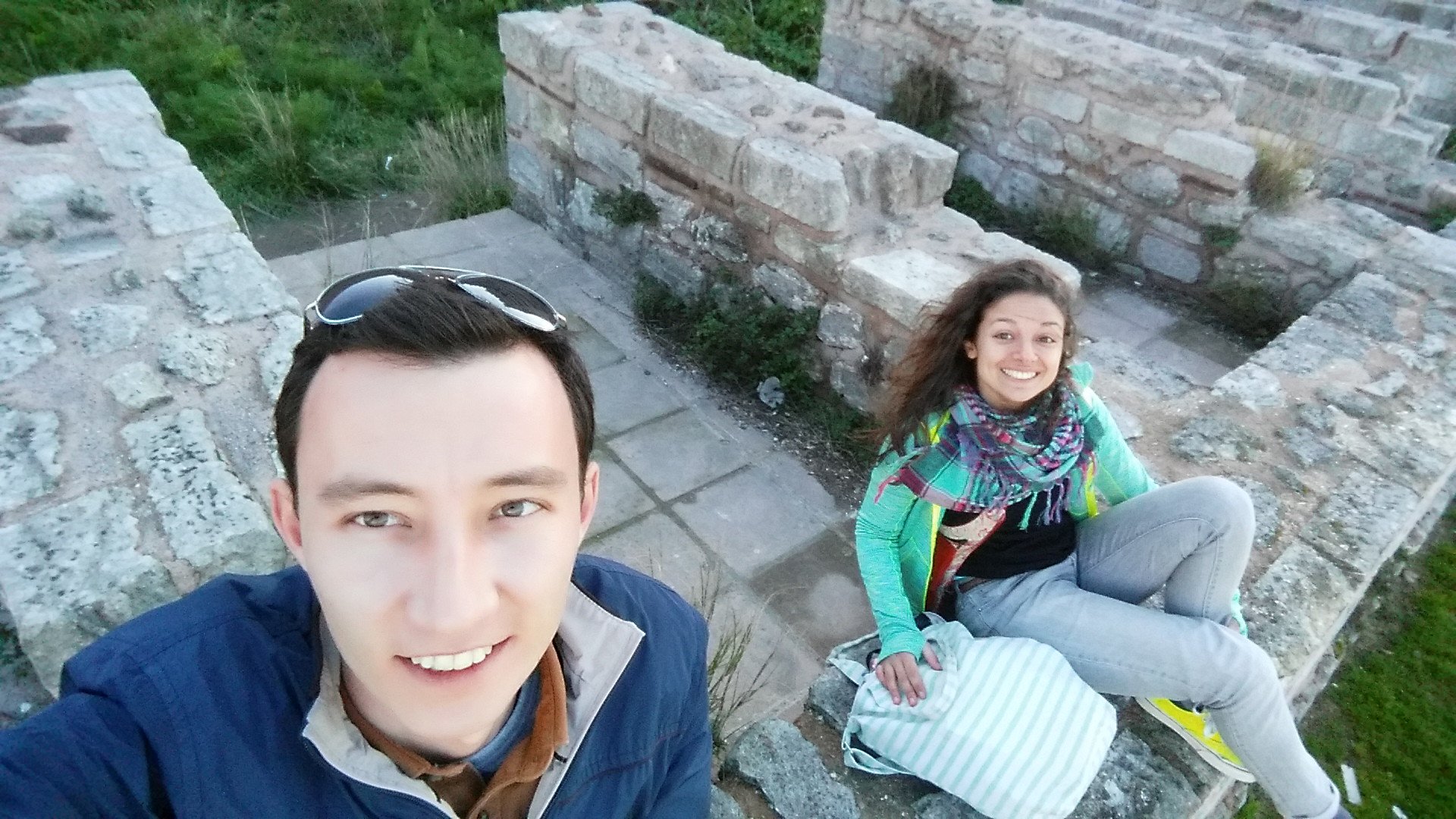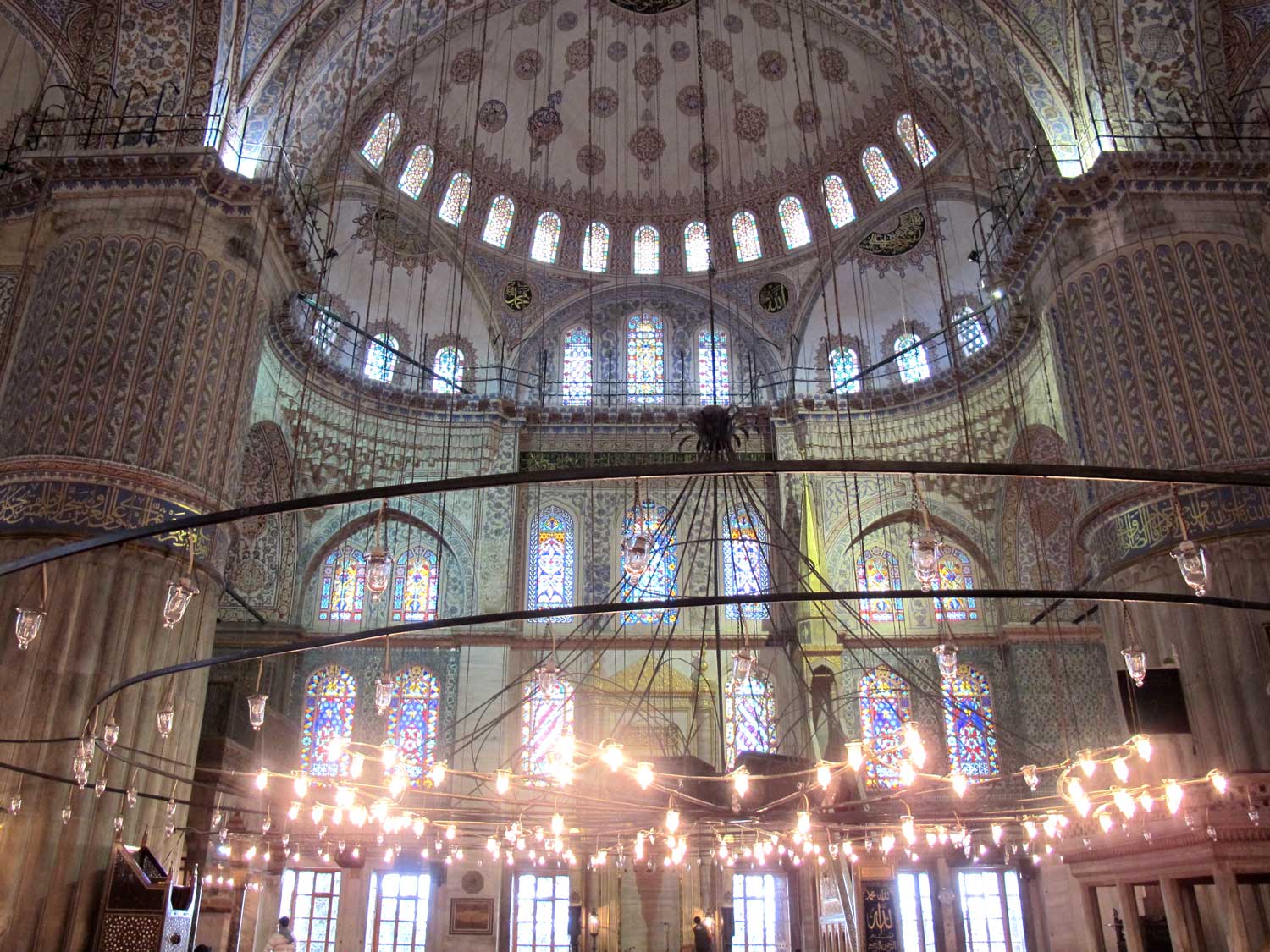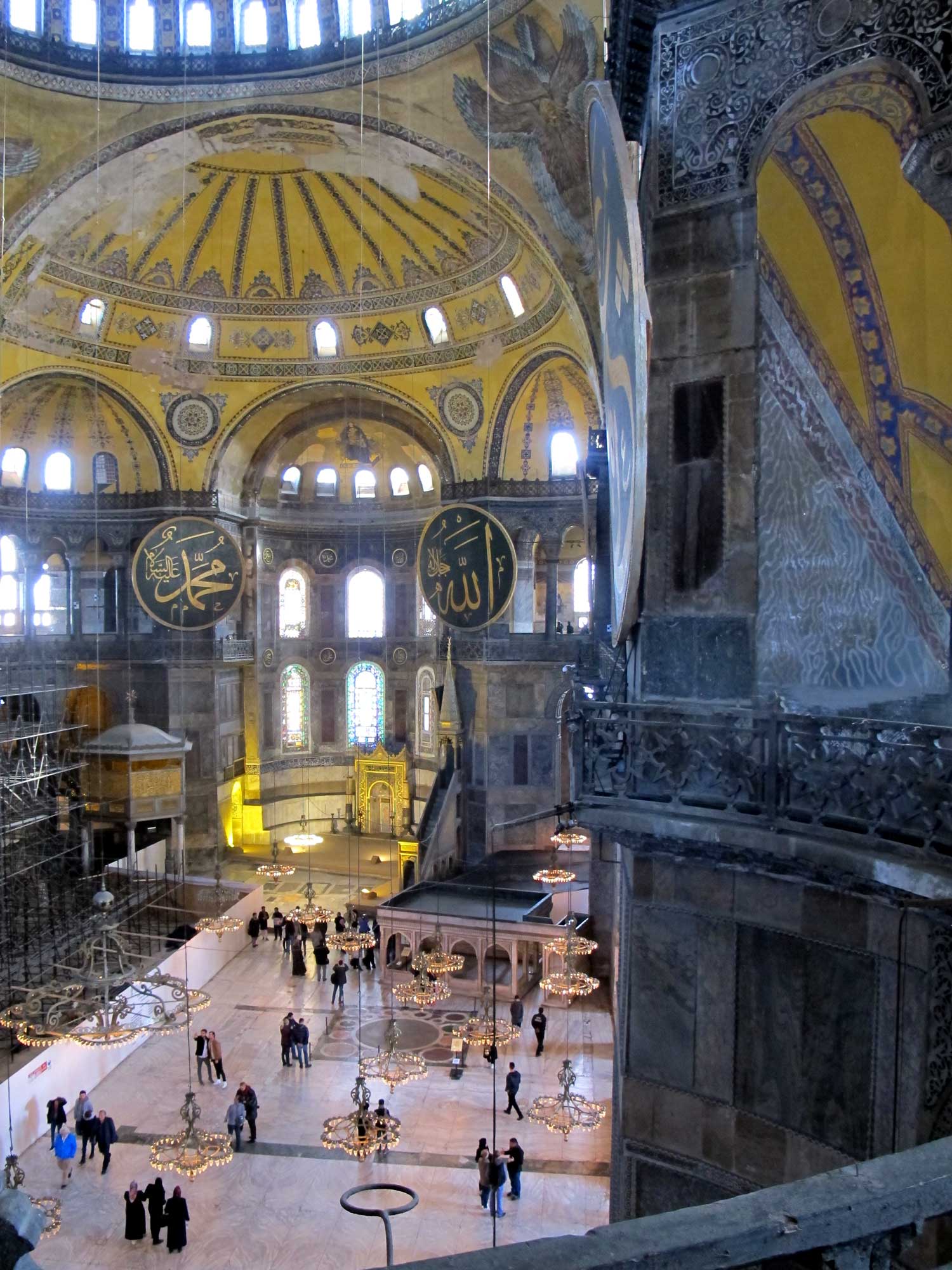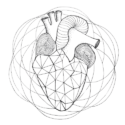That morning (12th January) I ventured out in the company of Aybek, my hotel’s night receptionist, who is from Uzbekistan. He said he intended on visiting the Costantinople wall and could accompany me to the old town since this was close. We decided to make the most of the sunshine and walk over the bridge rather than take the tram. The 30 minute walk was punctuated with Aybek pointing out regions, landmarks and dishing out facts at an impressive rate given that he had been in Istanbul for a mere 3 months.
As we were approaching the Sultanahmet area, Aybek got a phone call from a friend saying some kind of attack had happened at the Blue Mosque (where we were heading). Our surroundings seemed safe and it was all business as usual in the street so we decided to walk on and see what was happening. “Are you afraid?” Aybek asked. Police sirens, helicopters filled the air but the people on the streets and shops were just going about their daily life peacefully. I did not feel in any way threatened. So on we walked.
Cordoned off
We tried to go through Gulhane, the park where Aybek, hailing from land-locked Uzbekistan, had had his first glimpse of the sea. We were turned back by police who said the park was closed, as there had been a bomb. So out we went. We headed in the direction of the Blue Mosque and Hagia Sofia and found the area completely evacuated and theming with police in bulletproof vests, and media cameras.

Information was scarce but we were told there had been an attack and that the Blue Mosque area was closed for the morning. The police looked somewhat nervous but everyone around was milling about doing their thing. People were walking in the parts of the square that were still accessible, some stopping to wonder what was going on.
There was a gathering of media cameras holding an interview but there was nothing to film other than a square cordoned off by police and some parked emergency vehicles.

With the Blue Mosque clearly off limits we walked on to Hagia Sofia, hoping to be able to make it inside. Alas, the gates were closed and we were told that it was again closed for the morning for security reasons but might open in the afternoon.
Rather than fear, the overwhelming feeling building in me was one of sadness. Sadness about whatever had happened earlier that morning, sadness about our political situation and sadness about the pawns in this dirty game. Tourists, beautiful attractions and especially those affected by the fear being sown.
Giving up on the prospect of Sultanahmet on that day, we caught the tram to the Constantinople wall – fortifications separating the ancient city from the surrounding land. We crept in through a big gap in a gate and walked along the wall, taking photos and trying to imagine what the view might have been like during ancient times. Despite the sadness of the day, standing atop the wall with my new Uzbeki friend, looking at sprawling Istanbul in the distance was somewhat of a triumphant experience.

The news version
When I finally made it back to the hotel I got the ‘news’ version of what had happened. A ‘Syrian IS suicide bomber had detonated a bomb near the obelisk close to Blue Mosque, killing 10 and injuring 15, apparently Germans’. One of the guys at the hotel showed me a video of bloodied bodies lying on the ground saying it was footage from this morning. I’m definitely no investigation expert but being there, I could not but help experience a sense of disconnect between what could be seen with the naked eye a few hours after the event and what was shown on the news. How did they know he was Syrian, and IS? How does an investigation get concluded so quickly?
Luuk, a Dutch guy staying at the hotel said he had been walking towards the Blue Mosque when he heard a loud bang, at first thinking it was some kind of firework. He saw confusion and people running, saying there had been an attack, after which he left the area in search of safety. He called home in the evening to hear that the Netherlands had marked Istanbul as unsafe, suggesting that Dutch nationals avoid the area altogether.
Local evening news was showing footage of ambulances speeding by, police manning the cordoned-off areas and correspondents giving their take on the happenings.
Appearance vs reality?
The next morning, Luuk and I headed for Sultanahmet, firmly keeping our fingers crossed that we would be able to get into the Blue Mosque and Hagia Sophia. This time the square was open and accessible, allowing us to walk through in the direction of the Blue Mosque. Luuk noted that the square was a lot more populated that it had been yesterday morning just before the blast when it was so deserted that he thought he must have come to the wrong location. Today the square was absolutely full of locals talking and walking about.

Media cameras and correspondents from many different countries collected around the Obelisk, now marked with a smattering of red carnations placed in memory of the victims. The media and the carnations were the only evidence that anything had taken place. The square had been completely cleaned and tidied in preparation for the new day.
Watching as correspondents got filmed talking next to the Obelisk really highlighted how trust is a central part of our consumption of media. Nothing is visible to bystanders in the area yet interviews on the scene help us “see” and “feel” what happened while we hear about it from the news anchor.

Quiet attractions, relaxed visitors
We walked on to the Blue Mosque, today open and receiving visitors but mostly deserted. In the company of perhaps 20-odd visitors we entered the visitors’ door and enjoyed the beautiful and immensely powerful interior. The mosque cultivated a strong, hard-to-describe feeling in my chest that led to the sense of awe, wonder and wellbeing that I’m sure the builders of this mosque were hoping for.

Neighbouring Hagia Sophia was similarly quiet although not as deserted. We walked in without any queues at all and explored it with ease, enjoying the beautiful Byzantine art side-by-side with Islamic symbols. I absolutely loved the art, the immense sense of history and seeing Christianity and Islam represented together yet the Hagia Sophia did not move me like Blue Mosque had.

Despite media warnings, there seemed to be no fear hanging in the air. Locals and tourists all seemed to be enjoying the sights and going about their lives normally albeit in the company of far fewer tourists than usual.
The whole experience was nothing like I imagined it might be. My visuals and feelings on the ground were in complete disharmony with what was being shown on tv and while I absolutely do not hold my own experience as “the truth”, it created a million questions in my head about just how different two sides of a story can be and how trust-based the whole idea of reading and listening to someone else’s story is.



